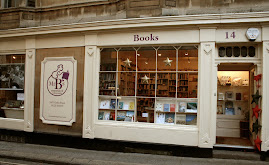Books and food seem to be following me around...this evening's meeting at The Salamander was accompanied by some delicious bar food (thank you Rachel et al!) - and we probably needed the extra sustenance to tackle Joyce's unique presentation of the late morning exploits within the walls of the Freeman's Journal and Evening Telegraph offices. And if you think that was wordy, that's nothing to the language hoops that Joyce puts the reader through in this section. We have transcriptions of spell checks, reverse text as (partly) seen through the eyes of a typesetter, wordplay, limericks and allusions aplenty.
Firstly, we are beginning to realise that Joyce's schemata is only casually based on the form of the Odyssey - this is no simple retelling. Rather, he seems to be picking up on certain symbols or themes and then elaborating. So, our 'winds' in this section, refer to the hot air of the press: letters, adverts, quips, orders, banter and segments of copy fly around and occasionally make sense! Very logical and metaphorical...but then Telemachus (Dadelus) and Odysseus (Bloom) are both present at this early stage (unlike in Homer's original).
The sharp, brief, headline punctuated volleys of dialogue and movement was perceived very differently across the group. Some found it brought back memories of the myriad layers of conversation that flowed around a busy office, whilst others thought that the short and disjointed paragraphs were at times inscrutable, with the result that the reader was never allowed to become truly immersed in the scene. We struggled to identify the supposed 45 styles of rhetoric that Joyce explored during this section, although subconsciously we were probably aware of the different communication techniques employed by each of the staff members, when communicating with peers or superiors. Bloom's 'bit part' functional dialogue was in marked contrast to his extended internal thought processes that the reader was privvy to in the previous section (Hades).
There were several examples in the text where none of us could provide a definitive interpretation and at best we were guessing at whether words and phrases were colloquial stalwarts of early 20th century Dublin or linguistic puzzles. Occasionally, the lack of clarity provided by the notes on word meaning is frustrating, but some of us are happy to accept that they won't understand every reference in detail - and as long as they get some sense of place and atmosphere, don't really mind! This led on to a general discussion about eavesdropping and how you can get the gist of a conversation by continuing to listen, even if you aren't given background info. So, we shall continue to listen (and read) - and any anecdotal examples of the fantastic conversations of strangers can be swapped at the next meeting.
Joyce's treatment of women in this section is similar to that of the milkmaid in 'Telemachus' and we are beginning to see that the female characters are either worshipped at one end of the spectrum or are simply fodder for the men to sharpen their wits on. Are these the only two variations we shall encounter?
Now that we have been presented with three very different voices and styles in the sections that we have covered, the feeling is beginning to emerge that the novelty keeps our interest going - but at the same time, we are relieved that the sections are sufficiently short that we don't tire of the stylistic trickery. Again, the curious mix of non-explanation and myriad tiny details meant we tussled with the question 'Is Joyce is presenting us with a hurriedly written first draft, or a laboured and carefully constructed piece of writing?' My money is on the prospect that we'll be kept guessing throughout the whole book.
So, onward (with enthusiasm). Next meeting is Tuesday 24th May from 6:45pm at The Salamander when we will hopefully have both 'Lestrygonians' and 'Scylla and Charybdis' under our belts - that's about 70 pages in layman's terms!
Tuesday, 10 May 2011
Subscribe to:
Post Comments (Atom)


No comments:
Post a Comment